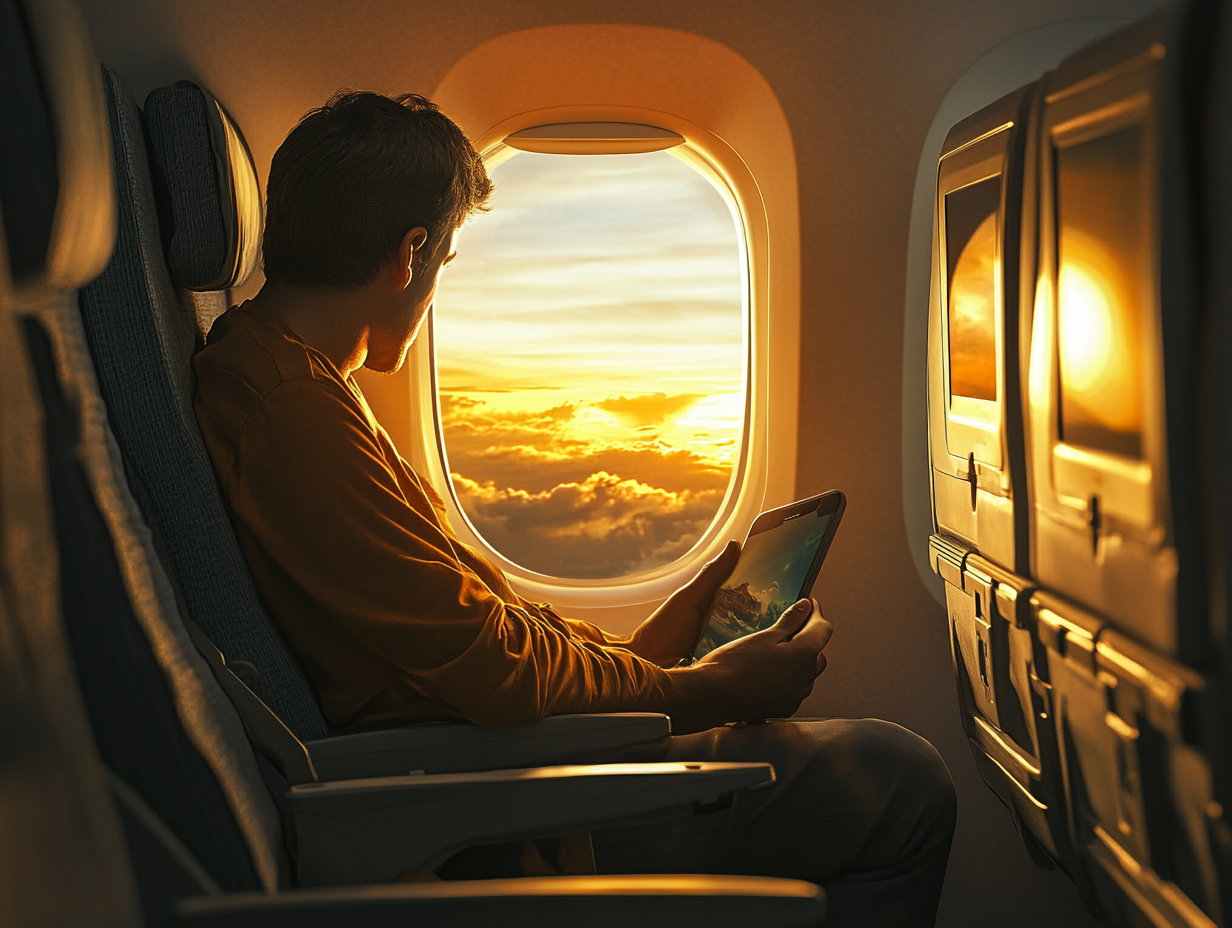Cramped seats, salty snacks, and long periods of sitting are a recipe for uncomfortable swelling. But these expert tips can help you prevent discomfort and deal if you experience the condition.
When you fly, you’re trapped in a tiny seat in an enclosed area without much room to move — so it’s no wonder you may land with swollen feet. And although leg and foot swelling during air travel is common and typically harmless, per the Mayo Clinic, it can still put an uncomfortable damper on your travel plans.
Luckily, there are things you can do to prevent it. Here, three doctors share their tips on how to avoid swollen feet and ankles during air travel and what you can do if you do experience some swelling.
Why Do Your Feet Swell When You Fly?
It comes down to inactivity during flights, says Lauren Wurster, a doctor of podiatric medicine and an Arizona-based podiatrist and spokesperson for the American Podiatric Medical Association (APMA). “The longer you are sitting still, the more gravity pulls fluid down to your feet and ankles,” she explains. “Also, the position you are sitting in, with your legs bent, increases the pressure on the veins and increases swelling.”
When sitting, the muscles that help pump fluid out of your legs are not active, says Timothy Ford, a doctor of podiatric medicine and an associate professor in the department of orthopedics at the University of Louisville School of Medicine. As a result, blood may pool in your feet, leading to swelling, medically known as edema.
Travel day habits can also contribute to feet swelling, says Todd Taylor, MD, an associate professor at Emory University’s department of emergency medicine. “As we travel, we tend to eat in restaurants, eat snacks, and consume other processed foods high in salt. This will raise our salt level in our body, increasing the fluid and again contributing to dependent edema [leg swelling].”
Finally, Dr. Wurster notes, there are certain health conditions that can cause swelling in your legs or feet regardless of your altitude, including heart, liver, thyroid, and kidney conditions; pregnancy; and venous insufficiency. (That said, if minor swelling occurs only during air travel, it’s more likely due to the lack of mobility in your legs than an underlying medical concern.)
Fortunately, there are steps you can take to reduce the likelihood of leg swelling during travel and potentially reduce swelling when it happens. Read on for the experts’ tips.
10 Ways to Prevent Swollen Feet During Travel
1. Drink Water Throughout Your Travels
Even though it might feel counterintuitive to add more fluids to your body when it’s retaining fluid, the Cleveland Clinic notes that drinking more water can help clear your system of excessive sodium, which contributes to fluid retention. Drink plenty of water the day before and the day of the trip so that you don’t start out dehydrated. Bring a big bottle of water with you on the plane, and refill it as needed to stay hydrated. Another plus to drinking a lot of water: It’ll motivate you to get up and walk to the bathroom when nature calls.
2. Watch Your Diet and Avoid Salty Foods
Avoid salt as much as possible on the day of and even the day before. Salt can cause you to retain fluid, notes the Mayo Clinic, which can make your feet swell even more.
3. Reach for a Pair of Compression Socks
Your flight day outfit should include compression socks that reach up to your knees. “I really love this one as they are really effective,” says Dr. Taylor. And these days, they don’t have to be boring! Endurance athletes use compression socks during and after racing, so you can find cool colors and patterns. The APMA also offers a list of its approved socks and hosiery. “Avoid normal socks that constrict above the ankle,” suggests Ford.
4. Stretch Your Legs on Long Flights
If possible, get up to walk the aisle every hour or so, especially on flights over two hours, recommends Dr. Ford. Standing or walking to the bathroom can get your blood flowing and help combat swelling.
5. Give Your Feet a Seated Workout
Even when you can’t get up and walk around, you can work the muscles in your feet. Point your toes up and down, then side to side to get your feet moving. The focus here is flexing the muscles in your feet, calves, and legs to get them engaged after a long period of inactivity, says Wurster.
6. Stow Bags Overhead to Maximize Legroom
If your feet are fighting for space with your carry-on bags, they’ll be cramped even more into awkward positions that cut off the blood supply. Store your bags overhead.
7. Don’t Cross Your Legs
Your circulation is already slower when you’re sitting for hours, so don’t cut it off even more by crossing your legs. (Past research has also suggested crossing the leg at the knee results in a significant increase in blood pressure for people with hypertension.)
8. Shift Positions Regularly While Seated
The position of your legs when you are seated increases pressure in your leg veins, explains the Mayo Clinic, so don’t stay locked in one position for too long. Wurster advises shifting your seated position frequently to avoid being in one position for too long.
9. Elevate Your Feet to Help Blood Flow Return
Keeping your legs raised can help improve circulation, per the Cleveland Clinic. Wherever possible, try to raise your legs and feet; if there’s no one next to you, stretch out and prop your feet up across the seats.
10. Opt for Comfy and Practical Footwear
Ford recommends wearing slip-on shoes on travel days because “they can be removed easily and allow you to massage your feet or exercise your feet.” A foot massage could help stimulate blood flow — just be conscious of your neighbors. (This might be one tip to save for a road trip rather than a crowded plane.)
How to Reduce Swelling in Feet After Travel
Once you’ve landed, you can use a lot of the same tools to reduce swelling after your travel: “Stay hydrated, move around, and wear compression socks,” says Wurster. “Also, be mindful of what you’re eating and avoid foods too high in sodium because that can also add to further swelling.”
If you can’t move around, elevating your legs after traveling can also help, says Taylor. Use gravity to your advantage and prop your feet up to help your circulation move that blood around. For those who can manage it, the Cleveland Clinic recommends a yoga pose called Viparita Karani, where you lay with your back on the ground perpendicular to a wall and then press your legs up against the wall. (Steer clear of this pose if you’re living with uncontrolled high blood pressure, glaucoma, congestive heart failure, kidney failure, or liver failure, though.)
When Should You See a Doctor About Swollen Feet and Legs?
“Usually, the swelling isn’t serious and will improve with activity after the flight lands,” says Wurster. “However, in long periods of travel and with people with certain risk factors, the swelling can be a sign of a blood clot in the calf, also known as a deep vein thrombosis. This can be very serious if not treated appropriately.”
Wurster and Taylor say any of these red flags would be a reason to go to the nearest emergency department for an evaluation:
- Severe leg swelling
- One leg bigger than the other
- Swelling, pain, redness, and warmth to one of the calves
- Chest pain
- Shortness of breath



